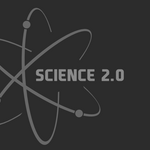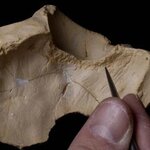Cancer Research

New research calls attention to the role of the expanding American waistline in health and medicine.
Researchers at the American Association for Cancer Research’s Sixth Annual International Conference on Frontiers in Cancer Prevention Research presented some of the latest research linking obesity, diabetes and metabolism to cancer risk. Their findings link weight gain and diabetes to a variety of cancers affecting both men and women, including breast, prostate and colorectal cancer
Diabetes and hyper-insulinemia as predictors of colorectal cancer risk in a prospective cohort of women.…

Although most scientists believe tuberculosis emerged only several thousand years ago, new research from The University of Texas at Austin reveals the most ancient evidence of the disease has been found in a 500,000-year-old human fossil from Turkey.
The discovery of the new specimen of the human species, Homo erectus, suggests support for the theory that dark-skinned people who migrate northward from low, tropical latitudes produce less vitamin D, which can adversely affect the immune system as well as the skeleton.
John Kappelman, professor of anthropology at The University of Texas at…

Described as a hotspot of botanical diversity, there are more than 20,000 indigenous plant species in South Africa. Several thousand of them are used by traditional healers every day in that country for treating a range of problems from the common cold to serious diseases such as AIDS.
How safe and effective these treatments are will be the focus of The International Center for Indigenous Phytotherapy Studies (TICIPS), a collaborative research effort between the University of Missouri-Columbia and the University of the Western Cape, South Africa. The center will be funded by a $4.4 million,…

A chemical found in household fittings has been found to affect the development of the mammary gland in rats and new research published in BMC Genomics is the first to show that this chemical can also affect the breasts' genomic profile.
Jose Russo and coworkers from the Fox Chase Cancer Center in Philadelphia, along with colleagues from the University of Alabama in Birmingham, US, fed lactating rats with butyl benzyl phthalate (BBP), which their offspring then absorbed via breast milk. The offspring ingested levels of chemical estimated to be nearly equivalent to the Environmental Protection…

The age-old refrain, “Eat your vegetables!” gets scientific support as researchers present the latest findings on cancer prevention at the American Association for Cancer Research’s Sixth Annual International Conference on Frontiers in Cancer Prevention, being held December 5 – 8 in Philadelphia, Pennsylvania.
Today, researchers present new data that demonstrate how diets full of raw vegetables --particularly broccoli sprouts -- and black raspberries could prevent or slow the growth of some common forms of cancer.
Dietary administration of black raspberries modulates markers of oxidative…

Prominent claims from observational studies of the cardiovascular benefits of vitamin E often continue to be supported in medical literature despite strong contradictory evidence from randomized trials, according to a study in the December 5 issue of JAMA.
Similar findings were found for claims regarding the protective effects of beta-carotene on cancer and estrogen on Alzheimer disease.
“Some research findings that have received wide attention in the scientific community, as proven by the high citation counts of the respective articles, are eventually contradicted by subsequent evidence. A…

Why does it take so long for soul mates to find each other? How does disease spread through a person’s body? When will the next computer virus attack your hard-drive?
A new theory published last month in Nature on the statistical concept of “First Passage Time,” or FPT, may provide the key to answering at least a few of these questions, says theory co-author Prof. Joseph Klafter from Tel Aviv University’s School of Chemistry. And the answers may lead to breakthroughs in medicine, mathematics, the environment, and elsewhere.
Prof. Klafter and his colleagues from the University of Pierre…

A multidisciplinary team of UCLA scientists were able to differentiate metastatic cancer cells from normal cells in patient samples using leading-edge nanotechnology that measures the softness of the cells.
The study in the journal Nature Nanotechnology, represents one of the first times researchers have been able to take living cells from cancer patients and apply nanotechnology to analyze them and determine which were cancerous and which were not. The nano science measurements may provide a potential new method for detecting cancer, especially in cells from body cavity fluids where…

The compound sulforaphane, whose natural precursors are found at high levels in broccoli and other cruciferous vegetables, has been hailed for its chemopreventive powers against cancer.
Now sulforaphane has demonstrated new skills in treating a genetic skin blistering disorder called epidermolysis bullosa simplex (EBS), Pierre Coulombe and colleagues at the Johns Hopkins University School of Medicine in Baltimore report at the American Society for Cell Biology 47th Annual Meeting.
EBS is a rare but devastating inherited condition in which fluid-filled lesions called bullae appear at sites…

Scientists at The University of Manchester have developed a new x-ray technique that could be used to detect hidden explosives, drugs and human cancers more effectively.
Professor Robert Cernik and colleagues from The School of Materials have built a prototype color 3D X-ray system that allows material at each point of an image to be clearly identified.
The technique developed by the Manchester scientists is known as tomographic energy dispersive diffraction imaging or TEDDI.
It harnesses all the wavelengths present in an x-ray beam to create probing 3D pictures.
The technique improves on…